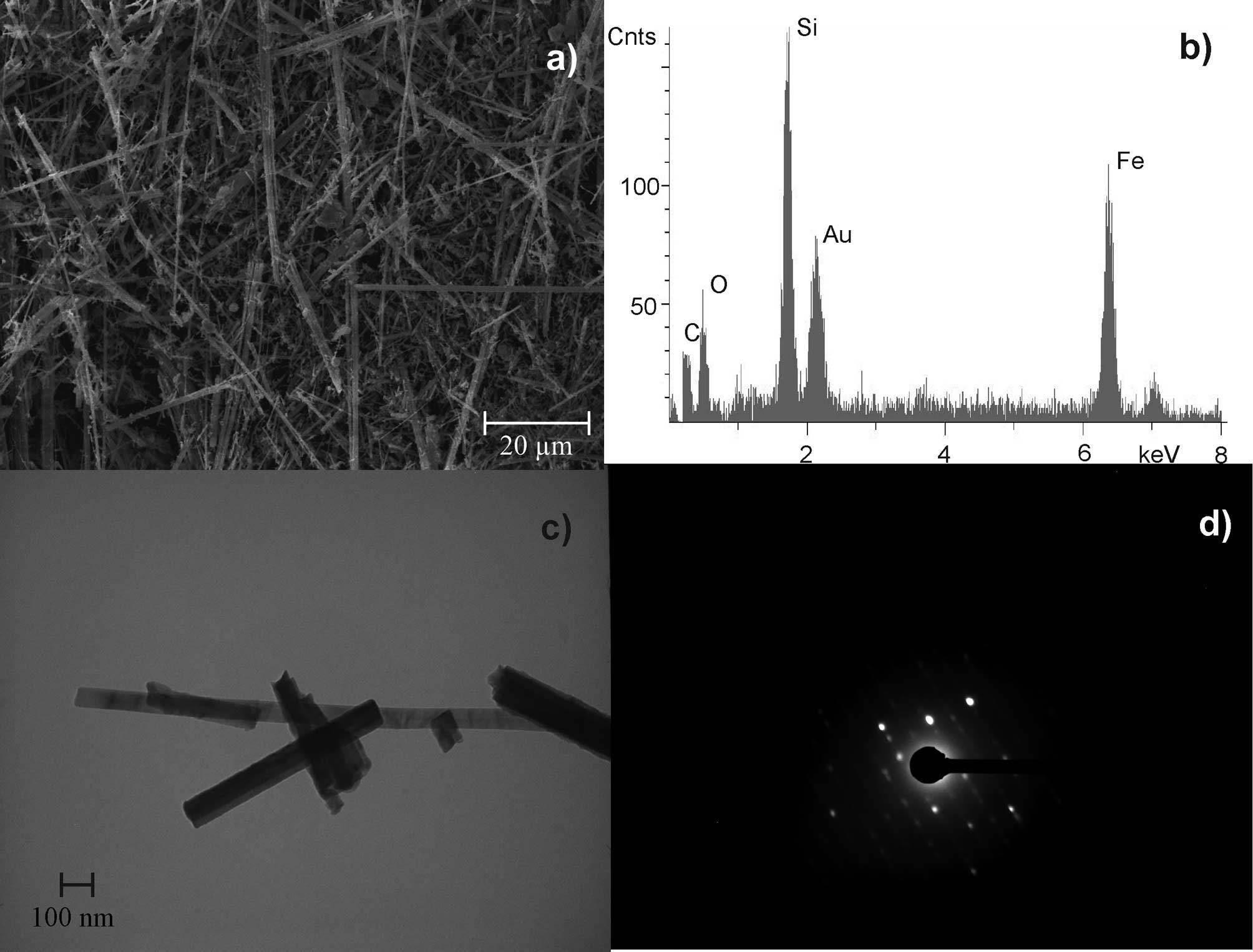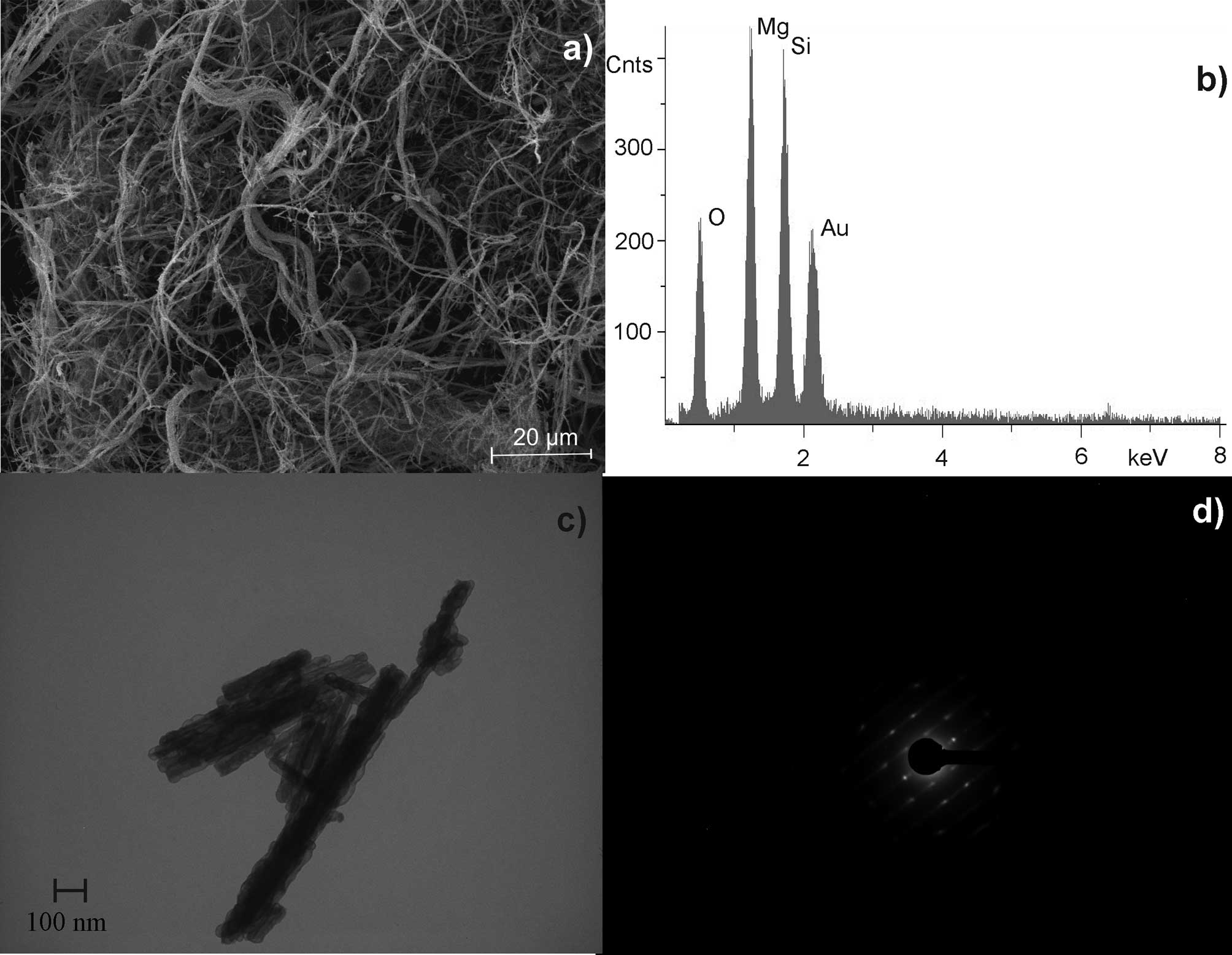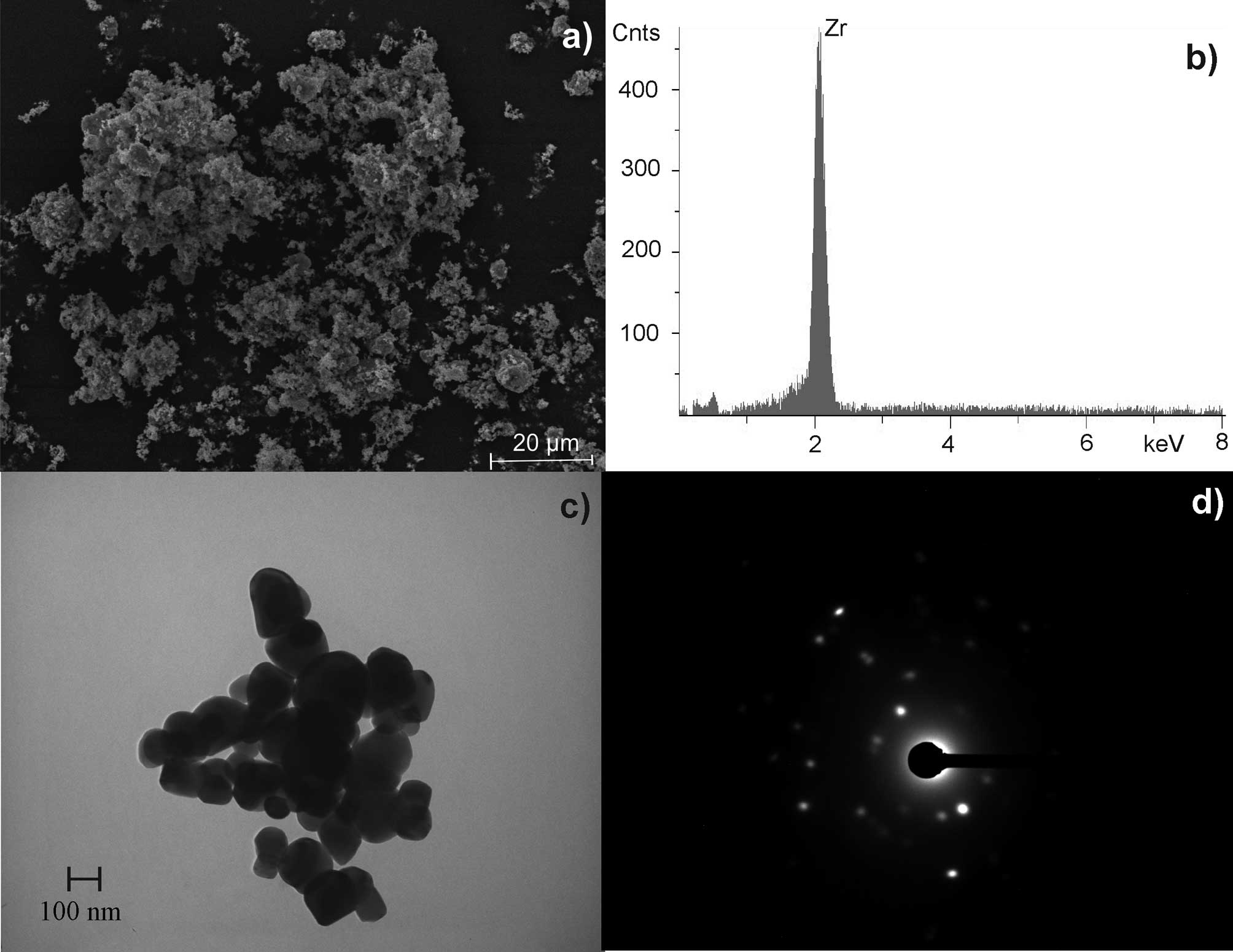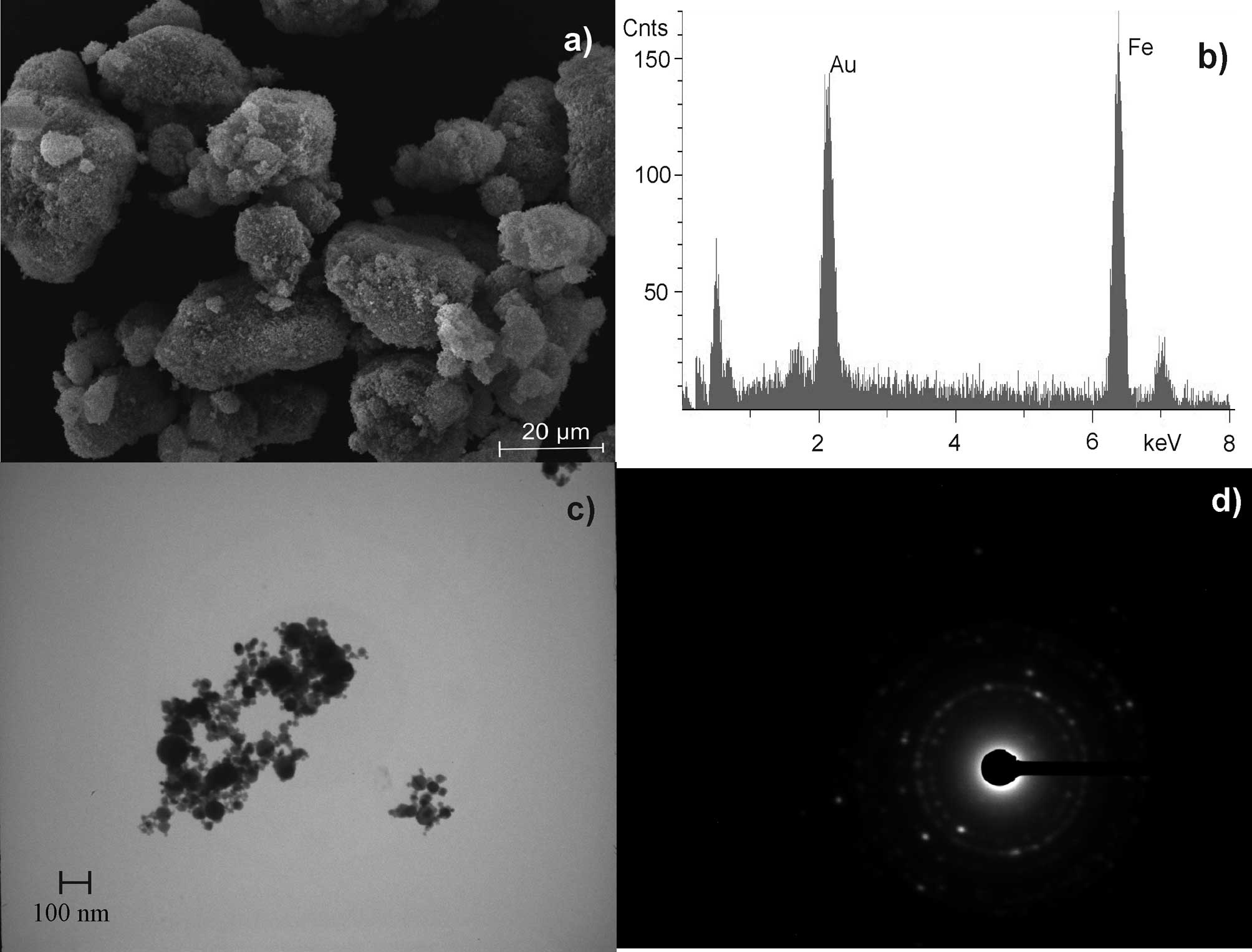|
1
|
DFG. List of MAK and BAT Values 2011.
Wiley-VCH Verlag GmbH & Co. KGaA; Weinheim: 2011
|
|
2
|
Mossman BT, Bignon J, Corn M, Seaton A and
Gee JB: Asbestos: scientific developments and implications for
public policy. Science. 247:294–301. 1990. View Article : Google Scholar : PubMed/NCBI
|
|
3
|
Kamp DW: Asbestos-induced lung diseases:
an update. Transl Res. 153:143–152. 2009. View Article : Google Scholar : PubMed/NCBI
|
|
4
|
Shukla A, MacPherson MB, Hillegass J,
Ramos-Nino ME, Alexeeva V, Vacek PM, Bond JP, Pass HI, Steele C and
Mossman BT: Alterations in gene expression in human mesothelial
cells correlate with mineral pathogenicity. Am J Respir Cell Mol
Biol. 41:114–123. 2009. View Article : Google Scholar : PubMed/NCBI
|
|
5
|
Lemaire I and Ouellet S: Distinctive
profile of alveolar macrophage-derived cytokine release induced by
fibrogenic and nonfibrogenic mineral dusts. J Toxicol Environ
Health. 47:465–478. 1996. View Article : Google Scholar : PubMed/NCBI
|
|
6
|
Robledo R and Mossman B: Cellular and
molecular mechanisms of asbestos-induced fibrosis. J Cell Physiol.
180:158–166. 1999. View Article : Google Scholar : PubMed/NCBI
|
|
7
|
Mossman BT and Churg A: Mechanisms in the
pathogenesis of asbestosis and silicosis. Am J Respir Crit Care
Med. 157:1666–1680. 1998. View Article : Google Scholar : PubMed/NCBI
|
|
8
|
Kamp DW and Weitzman SA: The molecular
basis of asbestos induced lung injury. Thorax. 54:638–652. 1999.
View Article : Google Scholar : PubMed/NCBI
|
|
9
|
Bhattacharya K, Davoren M, Boertz J,
Schins RP, Hoffmann E and Dopp E: Titanium dioxide nanoparticles
induce oxidative stress and DNA-adduct formation but not
DNA-breakage in human lung cells. Part Fibre Toxicol. 6:172009.
View Article : Google Scholar : PubMed/NCBI
|
|
10
|
Hext PM, Tomenson JA and Thompson P:
Titanium dioxide: inhalation toxicology and epidemiology. Ann Occup
Hyg. 49:461–472. 2005. View Article : Google Scholar : PubMed/NCBI
|
|
11
|
Bernard BK, Osheroff MR, Hofmann A and
Mennear JH: Toxicology and carcinogenesis studies of dietary
titanium dioxide-coated mica in male and female Fischer 344 rats. J
Toxicol Environ Health. 29:417–429. 1990. View Article : Google Scholar : PubMed/NCBI
|
|
12
|
Hart GA and Hesterberg TW: In vitro
toxicity of respirable-size particles of diatomaceous earth and
crystalline silica compared with asbestos and titanium dioxide. J
Occup Environ Med. 40:29–42. 1998. View Article : Google Scholar : PubMed/NCBI
|
|
13
|
Gurr JR, Wang AS, Chen CH and Jan KY:
Ultrafine titanium dioxide particles in the absence of
photoactivation can induce oxidative damage to human bronchial
epithelial cells. Toxicology. 213:66–73. 2005. View Article : Google Scholar : PubMed/NCBI
|
|
14
|
Kang SJ, Kim BM, Lee YJ and Chung HW:
Titanium dioxide nanoparticles trigger p53-mediated damage response
in peripheral blood lymphocytes. Environ Mol Mutagen. 49:399–405.
2008. View
Article : Google Scholar : PubMed/NCBI
|
|
15
|
DaNa: Zirconium dioxide. http://nanopartikel.info/cms/lang/en/Wissensbasis/Zirkoniumdioxid.
Accessed October 8, 2013
|
|
16
|
NanoCare Project Partners. NanoCare.
Health Related Aspects of Nanomaterials. Final Scientific Report.
Kuhlbusch TAJ, Krug HF and Nau K: 1st edition. DECHEMA eV (in
cooperation with the NanoCare Project Consortium); Frankfurt am
Main: 2009
|
|
17
|
Schneider J, Walter D, Brückel B and
Rödelsperger K: Primary particles and their agglomerate formation
as modifying risk factors of nonfibrous nanosized dust. J Toxicol
Environ Health A. 76:131–141. 2013. View Article : Google Scholar : PubMed/NCBI
|
|
18
|
Dopp E, Schuler M, Schiffmann D and
Eastmond DA: Induction of micronuclei, hyperdiploidy and
chromosomal breakage affecting the centric/pericentric regions of
chromosomes 1 and 9 in human amniotic fluid cells after treatment
with asbestos and ceramic fibers. Mutat Res. 377:77–87. 1997.
View Article : Google Scholar
|
|
19
|
Burmeister B, Schwerdtle T, Poser I,
Hoffmann E, Hartwig A, Müller WU, Rettenmeier AW, Seemayer NH and
Dopp E: Effects of asbestos on initiation of DNA damage, induction
of DNA-strand breaks, P53-expression and apoptosis in primary,
SV40-transformed and malignant human mesothelial cells. Mutat Res.
558:81–92. 2004. View Article : Google Scholar : PubMed/NCBI
|
|
20
|
Dopp E, Yadav S, Ansari FA, Bhattacharya
K, von Recklinghausen U, Rauen U, Rödelsperger K, Shokouhi B, Geh S
and Rahman Q: ROS-mediated genotoxicity of asbestos-cement in
mammalian lung cells in vitro. Part Fibre Toxicol. 2:92005.
View Article : Google Scholar : PubMed/NCBI
|
|
21
|
Poser I, Rahman Q, Lohani M, Yadav S,
Becker HH, Weiss DG, Schiffmann D and Dopp E: Modulation of
genotoxic effects in asbestos-exposed primary human mesothelial
cells by radical scavengers, metal chelators and a glutathione
precursor. Mutat Res. 559:19–27. 2004. View Article : Google Scholar
|
|
22
|
Bhattacharya K: Comparative analysis of
fine and nanoparticles for cellular uptake, oxidative stress and
genomic damage in human lung cells (unpublished PhD thesis).
University of Duisburg-Essen; 2009
|
|
23
|
Rahman Q, Lohani M, Dopp E, Pemsel H,
Jonas L, Weiss DG and Schiffmann D: Evidence that ultrafine
titanium dioxide induces micronuclei and apoptosis in Syrian
hamster embryo fibroblasts. Environ Health Perspect. 110:797–800.
2002. View Article : Google Scholar : PubMed/NCBI
|
|
24
|
Bhattacharya K, Hoffmann E, Schins RF, et
al: Comparison of micro- and nanoscale Fe+3-containing
(Hematite) particles for their toxicological properties in human
lung cells in vitro. Toxicol Sci. 126:173–182. 2012.PubMed/NCBI
|
|
25
|
Pfaffl MW: A new mathematical model for
relative quantification in real-time RT-PCR. Nucleic Acids Res.
29:e452001. View Article : Google Scholar : PubMed/NCBI
|
|
26
|
Buxbaum G and Paff G: Industrial Inorganic
Pigments. 3rd edition. Wiley-VCH Verlag GmbH & Co. KGaA;
Weinheim: 2005, View Article : Google Scholar
|
|
27
|
Buxbaum G and Printzen H: Ullmann’s
Encyclopedia of Industrial Chemistry. A20. 5th edition. VCH
Verlagsgesellschaft mbH; Weinheim: pp. 2971992
|
|
28
|
Walter D: Characterization of synthetic
hydrous hematite pigments. Thermochimica Acta. 445:195–199. 2006.
View Article : Google Scholar
|
|
29
|
Pott F and Roller M: Carcinogenicity study
with nineteen granular dusts in rats. Eur J Oncol. 10:249–281.
2005.PubMed/NCBI
|
|
30
|
Jones JSP, Smith PG, Pooley FD, et al:
Biological effects of mineral fibres. IARC Monographs on the
Evaluation of Carcinogenic Risks to Humans WHO. International
Agency for Research on Cancer; Lyon: pp. 637–653. 1980
|
|
31
|
WHO, IARC. IARC Monographs on the
Evaluation of Carcinogenic Risks to Humans Overall Evaluations of
Carcinogenicity: An Updating of IARC Monographs Volumes 1 to 42.
(Supplement 7)IARC; Lyon: 1987, http://monographs.iarc.fr/ENG/Monographs/suppl7/suppl7.pdf.
Accessed October 8, 2013
|
|
32
|
Baur X, Schneider J, Woitowitz HJ and
Velasco Garrido M: Do advers health effects of chrysotile and
amphibole asbestos differ? Pneumologie. 66:497–506. 2012.(In
German).
|
|
33
|
Bernstein DM, Rogers R and Smith P: The
biopersistence of Canadian chrysotile asbestos following
inhalation. Inhal Toxicol. 15:1247–1274. 2003. View Article : Google Scholar : PubMed/NCBI
|
|
34
|
Dopp E, Poser I and Papp T: Interphase
fish analysis of cell cycle genes in asbestos-treated human
mesothelial cells (HMC), SV40-transformed HMC (MeT-5A) and
mesothelioma cells (COLO). Cell Mol Biol (Noisy-le-grand).
48:OL271–OL277. 2002.PubMed/NCBI
|
|
35
|
Schürkes C, Brock W, Abel J and Unfried K:
Induction of 8-hydroxydeoxyguanosine by man made vitreous fibres
and crocidolite asbestos administered intraperitoneally in rats.
Mutat Res. 553:59–65. 2004.PubMed/NCBI
|
|
36
|
Ruosaari S, Hienonen-Kempas T, Puustinen
A, Sarhadi VK, Hollmén J, Knuutila S, Saharinen J, Wikman H and
Anttila S: Pathways affected by asbestos exposure in normal and
tumour tissue of lung cancer patients. BMC Med Genomics. 1:552008.
View Article : Google Scholar : PubMed/NCBI
|
|
37
|
Park EJ, Kim H, Kim Y, Yi J, Choi K and
Park K: Inflammatory responses may be induced by a single
intratracheal instillation of iron nanoparticles in mice.
Toxicology. 275:65–71. 2010. View Article : Google Scholar : PubMed/NCBI
|
|
38
|
Könczöl M, Ebeling S, Goldenberg E, Treude
F, Gminski R, Gieré R, Grobéty B, Rothen-Rutishauser B, Merfort I
and Mersch-Sundermann V: Cytotoxicity and genotoxicity of
size-fractionated iron oxide (magnetite) in A549 human lung
epithelial cells: role of ROS, JNK, and NF-kappaB. Chem Res
Toxicol. 24:1460–1475. 2011.PubMed/NCBI
|
|
39
|
Singh S, Shi T, Duffin R, Albrecht C, van
Berlo D, Höhr D, Fubini B, Martra G, Fenoglio I, Borm PJ and Schins
RP: Endocytosis, oxidative stress and IL-8 expression in human lung
epithelial cells upon treatment with fine and ultrafine
TiO2: role of the specific surface area and of surface
methylation of the particles. Toxicol Appl Pharmacol. 222:141–151.
2007. View Article : Google Scholar : PubMed/NCBI
|
|
40
|
Witzel II, Koh LF and Perkins ND:
Regulation of cyclin D1 gene expression. Biochem Soc Trans.
38:217–222. 2010. View Article : Google Scholar : PubMed/NCBI
|
|
41
|
Zharkov DO, Mechetin GV and Nevinsky GA:
Uracil-DNA glycosylase: structural, thermodynamic and kinetic
aspects of lesion search and recognition. Mutat Res. 685:11–20.
2010. View Article : Google Scholar : PubMed/NCBI
|
|
42
|
Hillegass JM, Shukla A, MacPherson MB,
Bond JP, Steele C and Mossman BT: Utilization of gene profiling and
proteomics to determine mineral pathogenicity in a human
mesothelial cell line (LP9/TERT-1). J Toxicol Environ Health A.
73:423–436. 2010. View Article : Google Scholar : PubMed/NCBI
|
|
43
|
Perkins TN, Shukla A, Peeters PM,
Steinbacher JL, Landry CC, Lathrop SA, Steele C, Reynaert NL,
Wouters EF and Mossman BT: Differences in gene expression and
cytokine production by crystalline vs. amorphous silica in human
lung epithelial cells. Part Fibre Toxicol. 9:62012. View Article : Google Scholar : PubMed/NCBI
|
|
44
|
Huang YC, Karoly ED, Dailey LA, Schmitt
MT, Silbajoris R, Graff DW and Devlin RB: Comparison of gene
expression profiles induced by coarse, fine, and ultrafine
particulate matter. J Toxicol Environ Health A. 74:296–312. 2011.
View Article : Google Scholar : PubMed/NCBI
|
|
45
|
Belitskaya-Levy I, Hajjou M, Su WC, Yie
TA, Tchou-Wong KM, Tang MS, Goldberg JD and Rom WN: Gene profiling
of normal human bronchial epithelial cells in response to asbestos
and benzo(a)pyrene diol epoxide (BPDE). J Environ Pathol Toxicol
Oncol. 26:281–294. 2007. View Article : Google Scholar : PubMed/NCBI
|
|
46
|
Hevel JM, Olson-Buelow LC, Ganesan B,
Stevens JR, Hardman JP and Aust AE: Novel functional view of the
crocidolite asbestos-treated A549 human lung epithelial
transcriptome reveals an intricate network of pathways with
opposing functions. BMC Genomics. 9:3762008. View Article : Google Scholar
|
|
47
|
Nymark P, Lindholm PM, Korpela MV, Lahti
L, Ruosaari S, Kaski S, Hollmén J, Anttila S, Kinnula VL and
Knuutila S: Gene expression profiles in asbestos-exposed epithelial
and mesothelial lung cell lines. BMC Genomics. 8:622007. View Article : Google Scholar : PubMed/NCBI
|



















